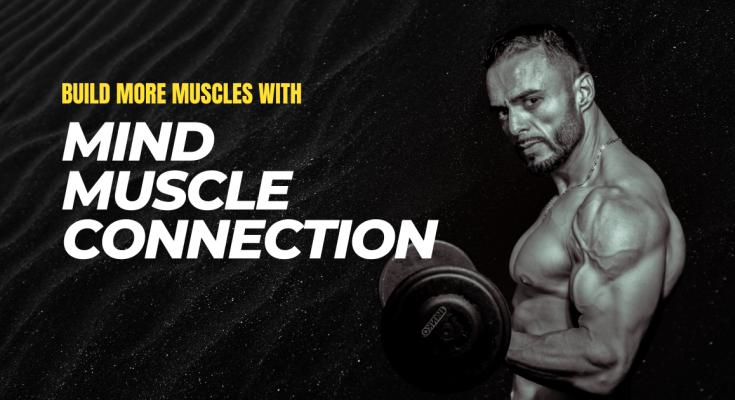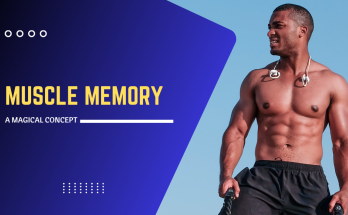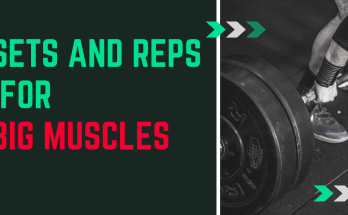Build more muscles with mind muscle connection

Introduction
Today, I want to dive into the concept of mind-muscle connection, what it is, and why it’s crucial for anyone serious about building muscle and adding significant size to their physique. But before we get into the specifics of the mind-muscle connection, let’s take a step back and understand why it’s so important. In today’s world, people are constantly bombarded with distractions, making it difficult to focus on anything for more than 10 or 20 seconds. The endless stream of Instagram reels, YouTube shorts, and other quick content has conditioned many to lose their ability to concentrate deeply.
This lack of focus often carries over into the gym. When people are performing exercises, they find it hard to concentrate on the specific set they’re working on, leading to a distracted and ineffective workout. But to truly build muscle, you need to give your full attention to the muscle you’re trying to work. It’s impossible to achieve meaningful progress without this focus. Just as with any goal in life, achieving success in muscle building requires concentration on the task at hand.
This is where the concept of the “mind-muscle connection” comes in. It’s become a popular term because it addresses the challenge of maintaining focus in an era of constant distractions. To effectively build the muscles you’re targeting, you need to be mentally connected to those muscles during your workout. This connection is what allows you to fully engage the muscle, ensuring that each rep counts towards your growth.

Vintage Era
In the era of Arnold Schwarzenegger and Ronnie Coleman, the term “mind-muscle connection” wasn’t commonly used because there were fewer distractions like smartphones. Focus was naturally easier to maintain during workouts. However, in today’s world, where constant distractions can make it hard to concentrate, understanding the mind-muscle connection becomes crucial.
Let’s break down what the mind-muscle connection really means. The term itself is quite straightforward: it refers to the connection between your mind and your muscles. Essentially, “mind” in this context represents your focus. For example, when performing bicep curls, it’s not just about using perfect form and curling the weight upward. To truly target your biceps, you need to ensure that you’re actively engaging and feeling the muscles work throughout the movement.
Even if your technique is flawless, you might not always be activating your muscle fibers effectively. The only way to gauge whether your biceps are being properly targeted and fatigued is through your own perception. You need to be in tune with how your muscles are responding during the exercise. This internal awareness is what allows you to ensure that you’re actually achieving the muscle engagement needed for growth.

Biggest mistake
To determine whether your muscles are effectively being worked, you need to pay attention to how they feel during the exercise. This feeling of muscle involvement is what defines the mind-muscle connection. Essentially, you need to focus on transferring the weight you’re lifting from your hands through your forearm and into the specific muscle you’re targeting. For instance, with bicep curls, it’s crucial to channel the weight into your biceps to stimulate growth.
Understanding this mechanism is key. You can’t simply mimic others in the gym; if you just pick up weights and imitate someone’s movements without focusing, you’ll end up using momentum rather than truly engaging your muscles. Instead, you should concentrate on the targeted muscle throughout each rep.
The mind-muscle connection involves actively engaging your mind with your muscles to ensure that every rep is purposeful. By focusing on the muscle you’re working on with each movement, you maximize its activation and effectiveness, leading to better muscle growth and development.

Hook Analogy
When performing exercises like lat pulldowns, it’s crucial to maintain focus on your back throughout every rep, whether you’re doing 12, 15, or 16 reps. The key is to ensure that the weight you’re lifting is being engaged by your back muscles, not just your hands. To achieve this, visualize that your hands are merely hooks holding the weight, while your back is doing the actual pulling.
A useful analogy from a seasoned bodybuilder is to think of your hands as hooks during pulling movements such as horizontal rows, lat pulldowns, or barbell rows. Imagine that your back muscles are the ones pulling the weight, with your hands simply securing it. This mental image helps emphasize the mind-muscle connection, ensuring that your back is fully engaged and working effectively during the exercise. By focusing on this connection, you enhance muscle activation and promote better growth in your back muscles.

To effectively engage your muscles during workouts, it’s essential to visualize your hands as hooks and focus on using the targeted muscle for each movement. For example:
Bicep Curls:Concentrate on using your biceps to lift the weight.
Tricep Extensions:Ensure your triceps are driving the movement.
Bench Press: Engage all primary muscles involved, including your shoulders, front delts, chest, and triceps.
Building this mind-muscle connection involves trial and error. You need to experiment and analyze how to properly involve your muscles in each exercise. By doing so, you’ll refine your technique and maximize the effectiveness of your workouts.

Conclusion
While top coaches and YouTubers can teach you the best techniques and provide insights into the mind-muscle connection, the true mastery of it comes from your personal experience. They can guide you on what to look for and offer corrections, but only you can truly feel and understand how your muscles are engaging during each exercise.
Recording yourself during workouts and reviewing the footage can help you identify and correct technical errors. However, the actual sensation of muscle activation and involvement is something you need to experience firsthand. No one else can accurately judge whether your muscles are properly engaged—this is something you need to discover and refine through your own efforts.
In essence, the mind-muscle connection is a personal journey of figuring out how to effectively target and engage your muscles. It’s about learning to tune into your body and ensuring that each exercise is performed with the intended muscle activation.




